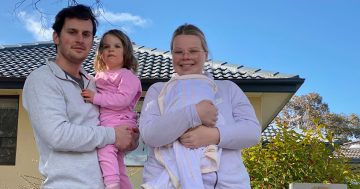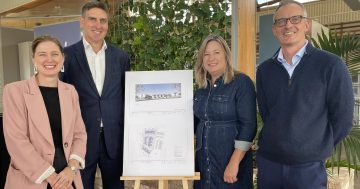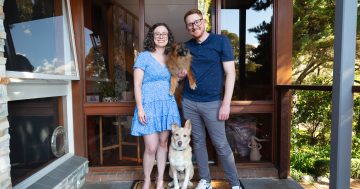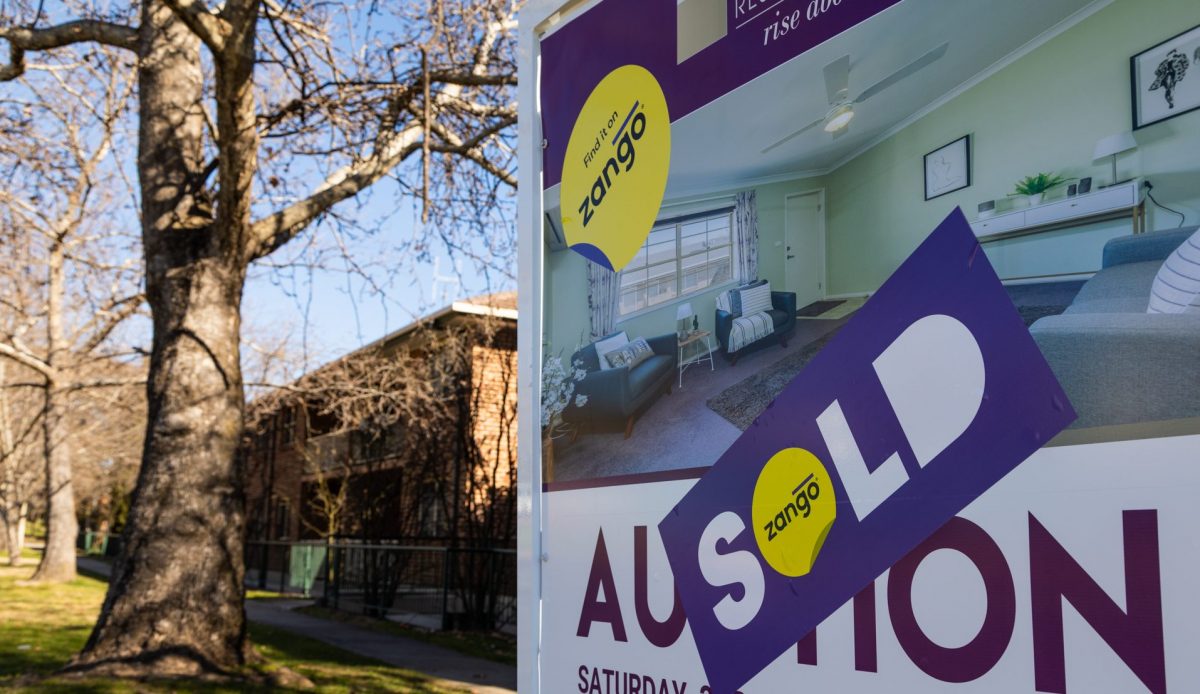
Do Canberra’s first home buyers stand a chance? Not if you’re on a single-income, figures suggest. Photo: Michelle Kroll.
“It’s ridiculous.”
Liv, aged 22 and halfway through a bachelor’s degree at the University of Canberra (UC), echoes what almost all her peers are saying at the moment.
“My parents, back in 2012, sold a six-bedroom house on a massive block for $600,000 and now you’d be lucky to get an apartment for that,” she tells Region.
“So my plan is to work full-time for the next few years after university, and then I’ll probably try to move down to somewhere like Adelaide, which has slightly more achievable housing.”
According to CoreLogic data from May, the median price for a house in Canberra sat at $943,253 and a unit at $597,370.
Throw in a 20 per cent deposit and a variable rate of more than six per cent on the remaining mortgage (and that’s before we count $4000 every year after that in land rates) and it’s little wonder many young people are thinking the great Aussie dream of owning your own home is, in fact, little more than a dream.
This is reflected in the data too. According to the Australian Institute of Health and Welfare, 50 per cent of Australians aged between 25 and 29 owned their own home in 1971. This dropped to 46 per cent in 1991, and then 36 per cent in 2021.
Dr John Hawkins is a senior lecturer in the School of Politics, Economics and Society at UC and agrees.
“The proportion of people in their 20s who own a home is considerably smaller than it was a few decades ago,” he said.
“The average house price in Canberra is slightly off its peak from about a year ago, when it was almost a million dollars, but it’s still well above the $700,000 it was pre-COVID.”
So what’s going on? Are you simply splurging too much on lattes and avocados, or was it really easier for your parents and grandparents to buy a home?
The deposit
According to recent data from property firm CoreLogic, if the average Canberran was to put away 15 per cent of their gross income every year, it would take them 9.6 years before they’d have a 20 per cent deposit on a house. A unit isn’t much better, at 6.1 years.
This is nearly two years longer than the decade-average.
To take it back further, the average cost of a Canberra house in 1990 was $122,000, or four times the average annual income. Nowadays, the average cost is $951,800, or more than 10 times the average annual income.
That’s a lot of avocados and solidifies what many already suspect – a home in Canberra is practically out of reach for single-income households.
The mortgage
Once you’ve coughed up a much larger sum than your parents or grandparents had to, the repayments on the remaining loan is where the playing field starts to level out. But only for a brief period.
What will often come up is the higher cash rate in the past, and it’s true – it reached a record 17 per cent in January 1990. At the time, the average mortgage across the country was $66,300 and average wages $23,600, so mortgage repayments made up 48 per cent of annual income.
Nothing to sniff at, and also similar to today. The average home loan is currently $577,000 and variable rate around six per cent, which means mortgage repayments make up 44.5 per cent of annual income.
But there is a difference.
“My experience when I was in my 20s was you borrowed what seemed like a lot of money at the time, so you had to be a bit restrained in your spending,” Dr Hawkins says.
“But fairly quickly, inflation and wage increases meant your repayments became a smaller proportion of your income, so it didn’t take very long before you were comfortable.”
For instance, 10 years later in 2000, the variable rate had dropped to slightly more than it is now (6.8 per cent) and mortgage repayments were down to around 34 per cent of average annual income.
So while they might be on par with those in the early 1990s, home owners are considerably worse off now than they were 20 years ago.
What’s next?
Dr Hawkins expects we’re over the hump when it comes to further increases to the cash rate, but the deposit situation will take much longer.
“Generally, to get house prices down, you need more houses built to increase the supply,” he says.
“Are enough new homes being built to meet the increased demand? It looks like – at least in the short term – no.”
The ACT Government owns all the land here and home owners really only lease it for a period of 99 years. This means it’s up to the government to release land for development, and we’re needing more. A lot more.
“We currently have around 180,000 dwellings in the territory and we believe that we will need that to grow to around 210,000 over the next five years,” Chief Minister Andrew Barr said in July 2022.
“That’s reflective of the sort of population growth that the city has experienced.”
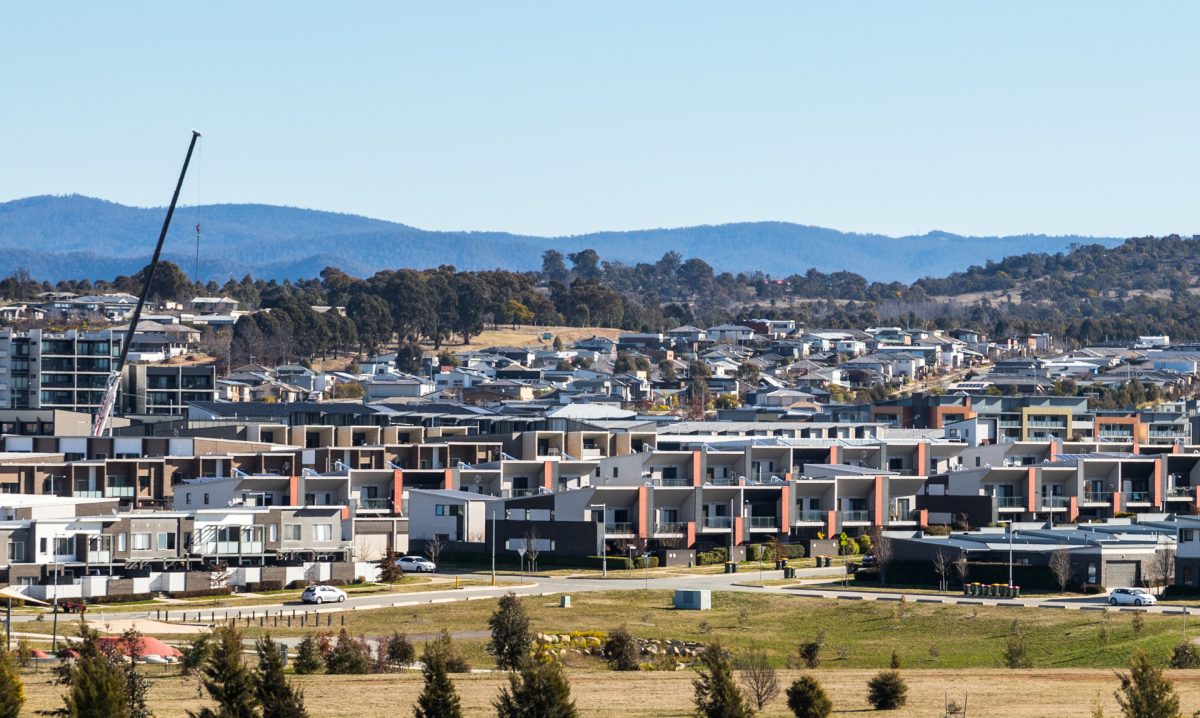
New dwellings in Coombs, but the government’s land releases are still lagging far behind population growth. Photo: Michelle Kroll.
Over the next five years, land will be released for an extra 30,000 homes and units, or 6000 per year. This is nearly double the annual average of 3430 between 2016 and 2020, but since 2016, the ACT’s population has also jumped by more than 66,000 people. That’s more than four times the number of new dwellings.
And even if first home buyers in the ACT have been exempt from having to pay stamp duty (or ‘conveyance duty’) since July 2019, Dr Hawkins says it’s still affecting the housing market on the whole.
“It tends to stop people moving house, which means people are stuck in houses that aren’t necessarily suitable for them because it costs so much to sell one house and buy another.”
Dr Hawkins describes the ACT Government’s plans for more houses and less stamp duty as steps in the right direction, even if “you can argue about whether they’re being done quickly enough”. He says Australia’s young families, while jaded, are yet to accept the fate of their European peers, many of whom are prepared to rent for life.
“The fact that few young Australians own their own home isn’t that few of them want to own their own home,” he says.
“It’s just they find they can’t afford it.”













